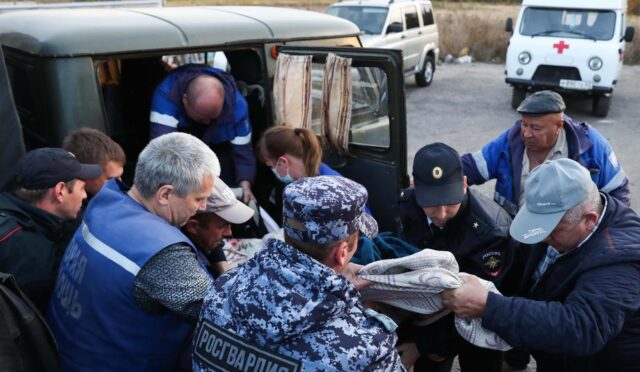Kyiv and Moscow Exchange Strikes on Energy Infrastructure
In a dramatic escalation of hostilities, Kyiv and Moscow conducted long-range strikes against each other’s energy infrastructure overnight, as reported by officials from both nations on Tuesday. These attacks resulted in significant damage, including a fire at a Russian oil refinery, and prompted new power restrictions across Ukraine. The timing of these assaults is critical, occurring just before a series of meetings between US and Ukrainian officials aimed at devising a strategy to conclude Russia’s nearly three-year invasion.
Naftogaz, Ukraine’s national gas company, confirmed that its facility in the eastern Poltava region suffered damage during the extensive Russian assault. In response, Naftogaz assured the public that it was implementing all necessary measures to stabilize the gas supply in the affected area. Local officials reported that gas supplies to nine towns and villages were disrupted, highlighting the ongoing challenge of power outages that have become increasingly common across Ukraine due to repeated Russian attacks on the energy grid.
Emergency Measures and Political Reactions
Following the assault on gas facilities in Poltava, Ukrainian Energy Minister German Galushchenko announced the implementation of emergency power restrictions. He emphasized, “To minimize potential impacts on the energy system, the transmission system operator is urgently enforcing emergency power supply restrictions.” This proactive measure reflects the dire situation as authorities strive to manage the fallout from these attacks.
Andriy Yermak, the chief of staff to the Ukrainian president, condemned the Russian strikes, stating that the missiles are a clear indication that President Vladimir Putin is solely focused on warfare. In a reciprocal claim, Russian authorities asserted that Ukraine launched numerous attack drones targeting western and southern regions, further intensifying the conflict between the two nations.
Continued Hostilities and Military Operations
Reports from Saratov, a Russian region located hundreds of kilometers from Ukraine, indicate that an attack ignited an industrial site, although details regarding the type of facility remain unclear. The Russian defense ministry claimed that its air defense systems intercepted or shot down 40 drones, including 18 over Saratov, underscoring the ongoing aerial confrontations.
Andriy Kovalenko, head of the National Security and Defense Council’s Countering Disinformation Centre in Ukraine, revealed that a significant oil refinery in Saratov was hit during these skirmishes. He shared amateur footage depicting the fire and searchlights illuminating the dark sky, illustrating the escalating violence. Additionally, the Engels military airbase in Saratov, frequently targeted by Ukrainian forces, faced another assault.
Strategic Implications of the Energy Strikes
Moscow’s ongoing bombing campaign against Ukraine’s energy infrastructure is portrayed as a strategy aimed at crippling facilities that support Kyiv’s military efforts. In response, Ukraine has retaliated by striking Russian energy and military targets. This tit-for-tat exchange underscores the heightened tensions and mutual accusations, with Moscow alleging that Ukraine utilizes missiles supplied by the US and Britain to penetrate deep into Russian territory.
As both nations seek to assert their dominance on the battlefield, the urgency for negotiations is palpable. These developments are particularly significant in light of upcoming discussions anticipated to occur early in US President Donald Trump’s second term, which may influence the direction of the conflict and the prospects for resolution.







